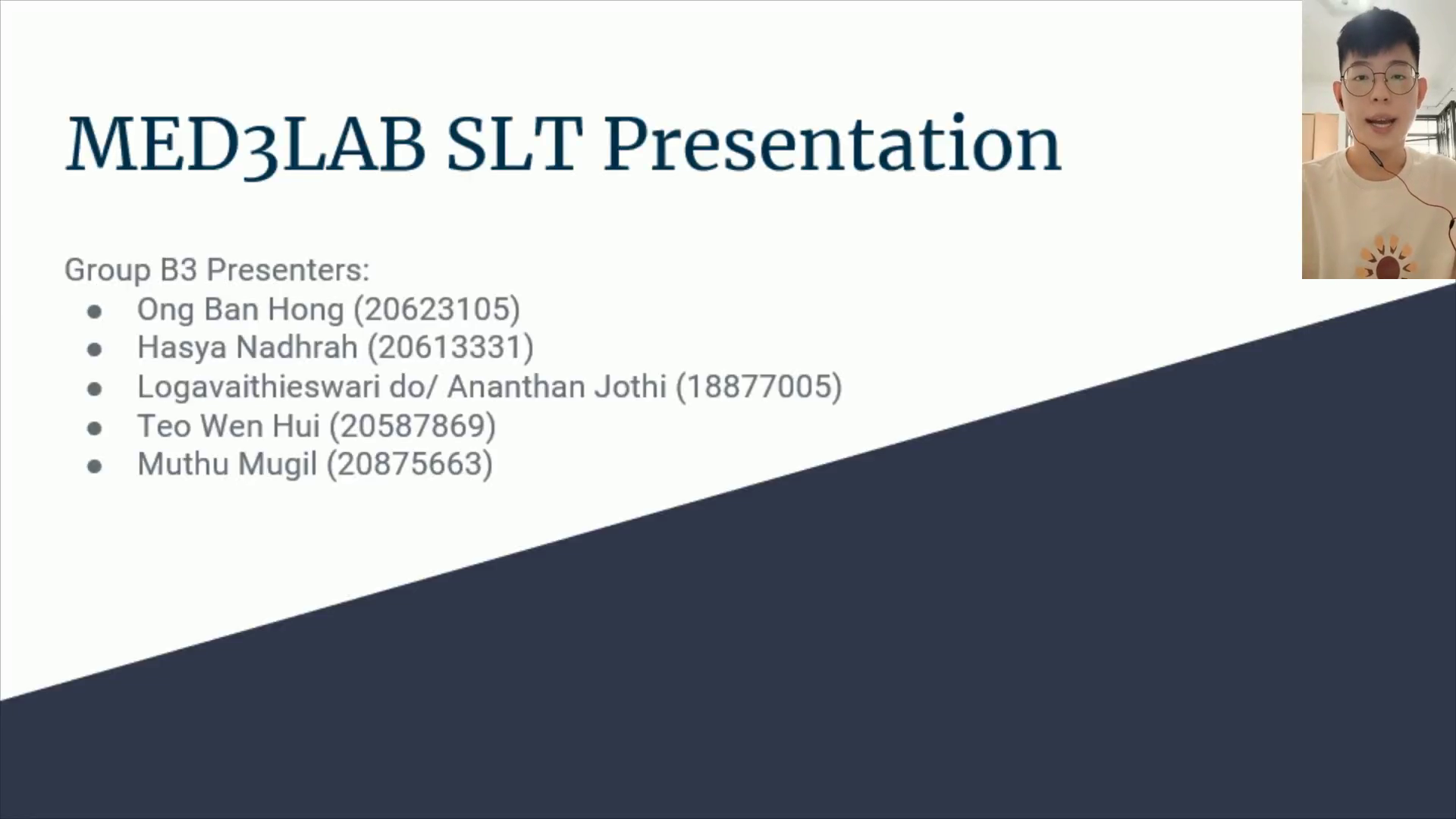
MED3LAB SLT Presentation
Scene 1 (0s)
WhatsApp Video 2021-10-25 at 7.33.19 PM.mp4. MED3LAB SLT Presentation.
Scene 2 (11s)
Ligation of vector and insert.
Scene 3 (18s)
WhatsApp Video 2021-10-25 at 7.34.03 PM.mp4. Qn 1: Within the practical module, we will set up some ligations. What is the endogenous function of DNA ligase?.
Scene 4 (1m 15s)
WhatsApp Video 2021-10-25 at 7.34.33 PM.mp4. Qn 1: How about T4 DNA ligase in particular?.
Scene 5 (1m 59s)
Slide 5.mov. Qn 2: Why is it often important in ligation reactions to optimise the molar ratio of insert to vector and also the overall DNA concentration?.
Scene 6 (3m 11s)
Slide 6(edited).mp4. Qn 2: Why is it often important in ligation reactions to optimise the molar ratio of insert to vector and also the overall DNA concentration?.
Scene 7 (3m 37s)
WhatsApp Video 2021-10-23 at 7.07.09 PM.mp4. Qn 3: Some ligation reaction protocols suggest incubating for a short time at room temperature while others suggest a longer incubation at about 14°C. Why might researchers sometimes use the lower temperature?.
Scene 8 (5m 6s)
Transformation into E. coli cells.
Scene 9 (5m 13s)
WhatsApp Video 2021-10-23 at 7.49.05 PM.mp4. Qn 1: What is a “competent” cell? When preparing the competent cells by the Inoue method, why do we grow the bacteria at 18°C overnight?.
Scene 10 (6m 19s)
WhatsApp Video 2021-10-25 at 1.14.25 PM.mp4. Qn 2: In this practical module, the competent cells are transformed via heat shock. How does this method work? Describe another method to achieve artificial transformation of bacteria..
Scene 11 (8m 48s)
WhatsApp Video 2021-10-23 at 7.07.14 PM.mp4. Qn 3: How could we calculate the transformation efficiency of competent cells?.
Scene 12 (10m 29s)
References. Anders H. Lund, Mogens Duch, Finn Skou Pedersen, Increased Cloning Efficiency by Temperature-Cycle Ligation, Nucleic Acids Research, Volume 24, Issue 4, 1 February 1996, Pages 800–801, https://doi.org/10.1093/nar/24.4.800 C, B. G. (2021, February 23). Bacterial Transformation – The Science Notes . The Science Notes. Retrieved October 21, 2021, from https://www.thesciencenotes.com/bacterial-transformation/ Carter, M., & Shieh, J. (2015). Gene Delivery Strategies. Guide to Research Techniques in Neuroscience, 239–252. https://doi.org/10.1016/b978-0-12-800511-8.00011-3 Cotner-Gohara, E., Kim, I. K., Hammel, M., Tainer, J. A., Tomkinson, A. E., & Ellenberger, T. (2010). Human DNA ligase III recognizes DNA ends by dynamic switching between two DNA-bound states. Biochemistry , 49 (29), 6165–6176. https://doi.org/10.1021/bi100503w Crow, E. (2010, December 15). Ligation optimization . Bitesize Bio. Retrieved October 21, 2021, from https://bitesizebio.com/10203/ligation-optimization/ Kroemer, T. (n.d.). Overview of T4 DNA Ligase: What it is, how it works, reactions, and more | GoldBio . Goldbio. Retrieved October 21, 2021, from https://www.goldbio.com/articles/article/overview-of-T4-DNA-ligase Lund, A. H., Duch, M., & Skou Pedersen, F. (1996). Increased Cloning Efficiency by Temperature-Cycle Ligation. Nucleic Acids Research , 24 (4), 800–801. https://doi.org/10.1093/nar/24.4.800 Martin, I. V., & MacNeill, S. A. (2002). ATP-dependent DNA ligases. Genome Biology , 3 (4), reviews3005.1. https://doi.org/10.1186/gb-2002-3-4-reviews3005 Rahimzadeh, M., Sadeghizadeh, M., Najafi, F., Arab, S., & Mobasheri, H. (2016). Impact of heat shock step on bacterial transformation efficiency. Molecular biology research communications, 5(4), 257–261. Tomkinson, A. E., & Sallmyr, A. (2013). Structure and function of the DNA ligases encoded by the mammalian LIG3 gene. Gene , 531 (2), 150–157. https://doi.org/10.1016/j.gene.2013.08.061 Zhou, J., Li, X., Xia, J., Wen, Y., Zhou, J., Yu, Z., & Tian, B. (2018). The role of temperature and bivalent ions in preparing competent Escherichia coli . 3 Biotech , 8 (5), 222. https://doi.org/10.1007/s13205-018-1243-x.
Scene 13 (11m 34s)
Thank You!.